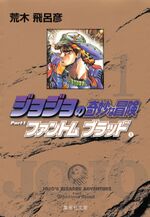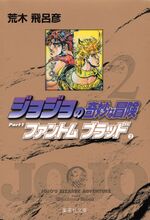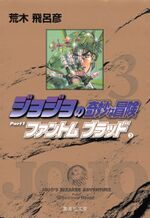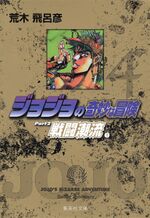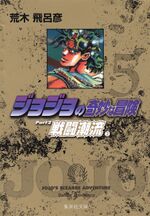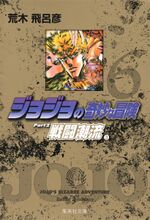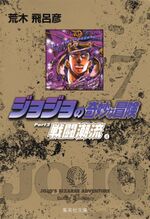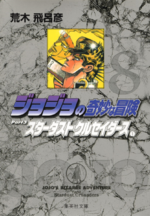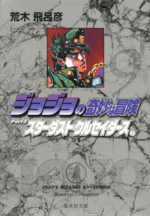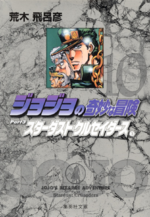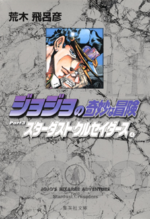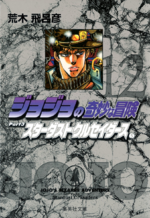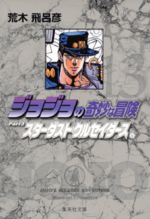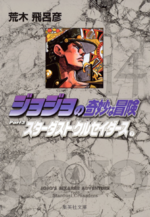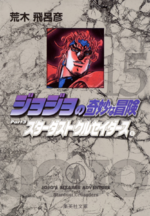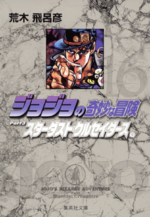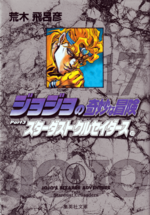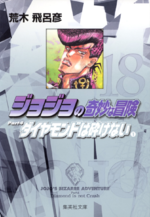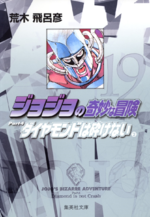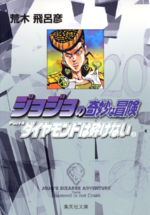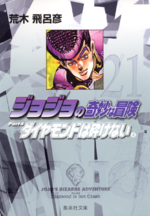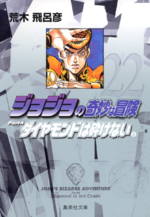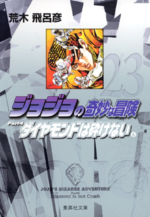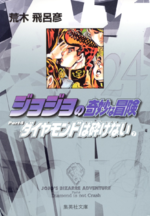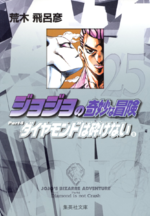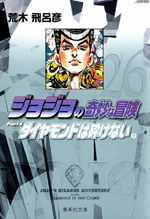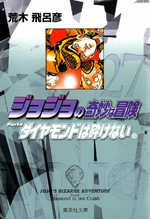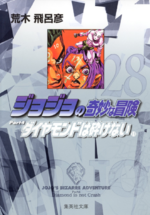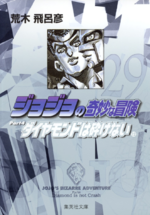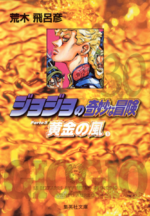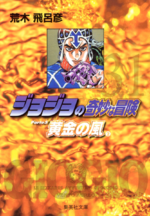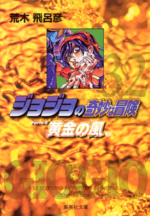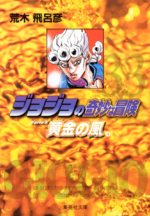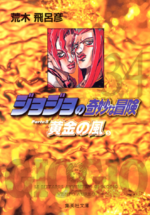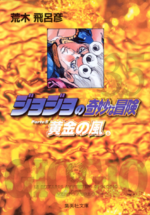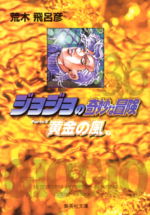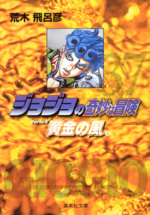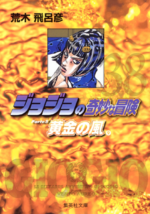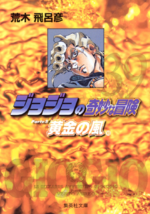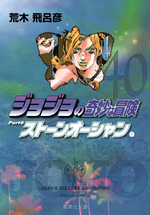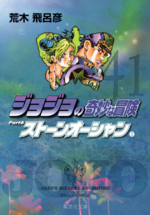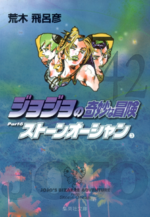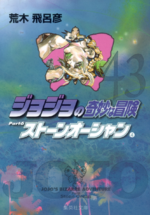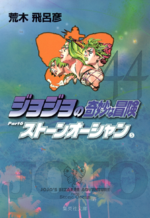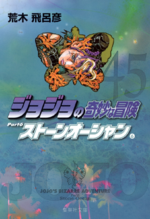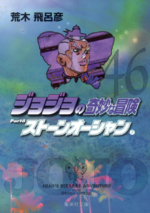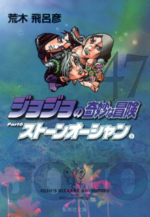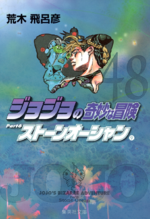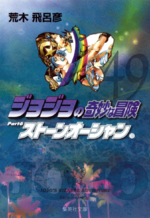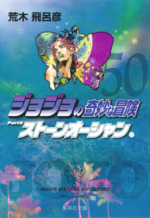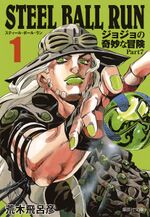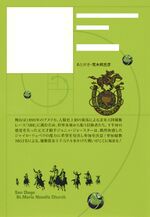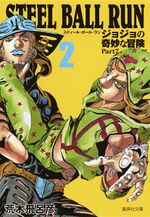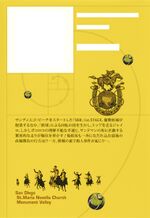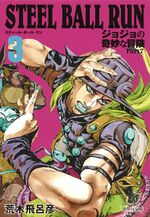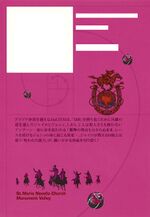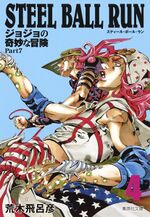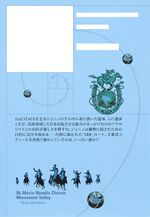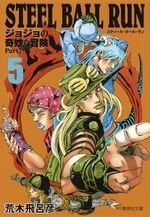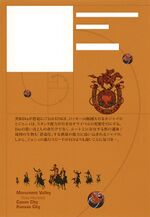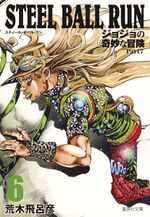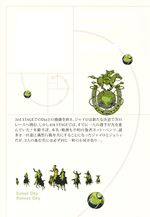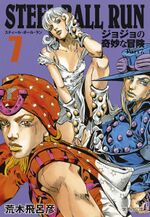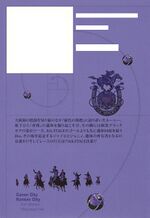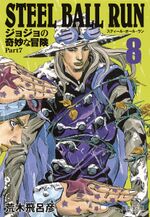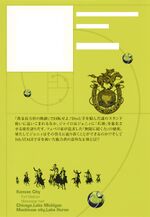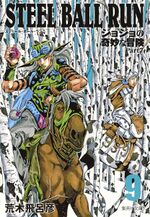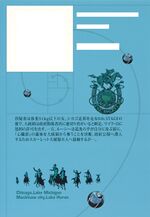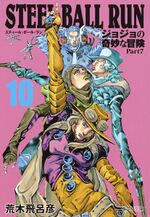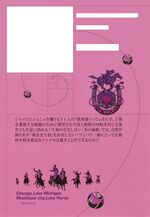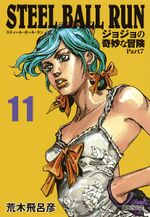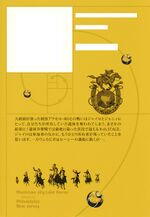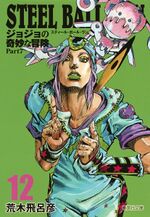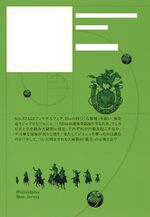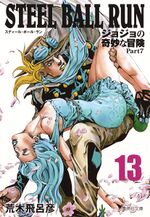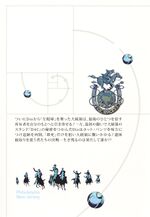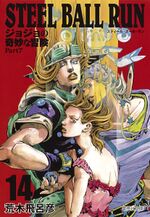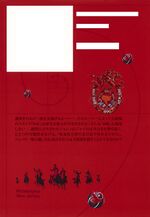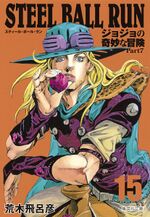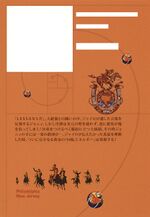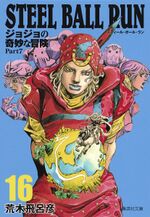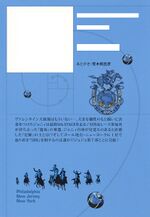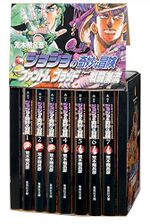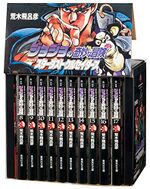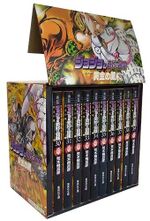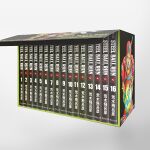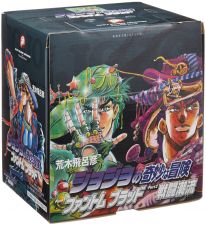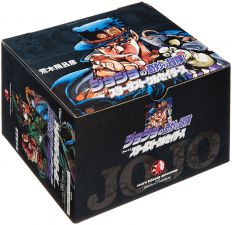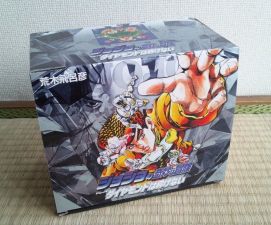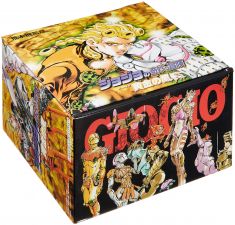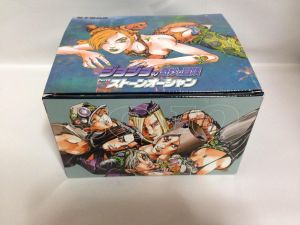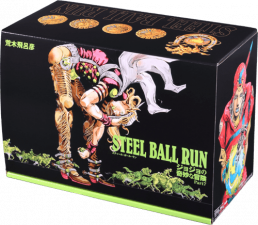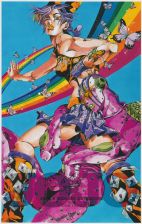Phantom Blood Volume 1
- Prologue (プロローグ, Purorōgu)
- Dio Brando the Invader, Part 1 (侵略者ディオ・ブランドー その①, Shinryakusha Dio Burandō Sono 1)
- Dio Brando the Invader, Part 2 (侵略者ディオ・ブランドー その②, Shinryakusha Dio Burandō Sono 2)
- Dio Brando the Invader, Part 3 (侵略者ディオ・ブランドー その③, Shinryakusha Dio Burandō Sono 3)
- Dio Brando the Invader, Part 4 (侵略者ディオ・ブランドー その④, Shinryakusha Dio Burandō Sono 4)
- A Letter from the Past, Part 1 (過去からの手紙 その①, Kako kara no Tegami Sono 1)
- A Letter from the Past, Part 2 (過去からの手紙 その②, Kako kara no Tegami Sono 2)
- The Stone Mask, Part 1 (石仮面 その①, Ishi Kamen Sono 1)
- The Stone Mask, Part 2 (石仮面 その②, Ishi Kamen Sono 2)
- The Stone Mask, Part 3 (石仮面 その③, Ishi Kamen Sono 3)
- The Stone Mask, Part 4 (石仮面 その④, Ishi Kamen Sono 4)
- Youth with Dio, Part 1 (ディオとの青春 その①, Dio to no Seishun Sono 1)
- Youth with Dio, Part 2 (ディオとの青春 その②, Dio to no Seishun Sono 2)
- Youth with Dio, Part 3 (ディオとの青春 その③, Dio to no Seishun Sono 3)
Phantom Blood Volume 2
- Youth with Dio, Part 4 (ディオとの青春 その④, Dio to no Seishun Sono 4)
- Youth with Dio, Part 5 (ディオとの青春 その⑤, Dio to no Seishun Sono 5)
- The Birth of DIO (
DIO の誕生, DIO no Tanjō) - Jack the Ripper and Zeppeli the Strange, Part 1 (切り裂きジャックと奇人ツェペリ その①, Kirisaki Jakku to Kijin Tseperi Sono 1)
- Jack the Ripper and Zeppeli the Strange, Part 2 (切り裂きジャックと奇人ツェペリ その②, Kirisaki Jakku to Kijin Tseperi Sono 2)
- Jack the Ripper and Zeppeli the Strange, Part 3 (切り裂きジャックと奇人ツェペリ その③, Kirisaki Jakku to Kijin Tseperi Sono 3)
- Jack the Ripper and Zeppeli the Strange, Part 4 (切り裂きジャックと奇人ツェペリ その④, Kirisaki Jakku to Kijin Tseperi Sono 4)
- Jack the Ripper and Zeppeli the Strange, Part 5 (切り裂きジャックと奇人ツェペリ その⑤, Kirisaki Jakku to Kijin Tseperi Sono 5)
- Ripple Overdrive, Part 1 (
波紋疾走 その①, Hamon Ōbādoraibu Sono 1) - Ripple Overdrive, Part 2 (
波紋疾走 その②, Hamon Ōbādoraibu Sono 2) - Ripple Overdrive, Part 3 (
波紋疾走 その③, Hamon Ōbādoraibu Sono 3) - Tarkus and the Dark Knight Bruford, Part 1 (タルカスと黒騎士ブラフォード その①, Tarukasu to Kuro Kishi Burafōdo Sono 1)
- Tarkus and the Dark Knight Bruford, Part 2 (タルカスと黒騎士ブラフォード その②, Tarukasu to Kuro Kishi Burafōdo Sono 2)
- Tarkus and the Dark Knight Bruford, Part 3 (タルカスと黒騎士ブラフォード その③, Tarukasu to Kuro Kishi Burafōdo Sono 3)
- Tarkus and the Dark Knight Bruford, Part 4 (タルカスと黒騎士ブラフォード その④, Tarukasu to Kuro Kishi Burafōdo Sono 4)
Phantom Blood Volume 3
- Sleep as a Hero (英雄として瞑る, Eiyū toshite Nemuru)
- The Knights' Ruins (騎士たちの遺跡, Kishitachi no Iseki)
- The Medieval Knights' Training Ground for Murder (中世騎士殺人修練場, Chūsei Kishi Satsujin Shūren Jō)
- Pluck for Tomorrow and the Successor, Part 1 (あしたの勇気・うけ継ぐ者 その①, Ashita no Yūki Uketsugumono Sono 1)
- Pluck for Tomorrow and the Successor, Part 2 (あしたの勇気・うけ継ぐ者 その②, Ashita no Yūki Uketsugumono Sono 2)
- Pluck for Tomorrow and the Successor, Part 3 (あしたの勇気・うけ継ぐ者 その③, Ashita no Yūki Uketsugumono Sono 3)
- The Three from a Faraway Land, Part 1 (遥かな国からの3人 その①, Haruka na Kuni kara no 3-nin Sono 1)
- The Three from a Faraway Land, Part 2 (遥かな国からの3人 その②, Haruka na Kuni kara no 3-nin Sono 2)
- The Three from a Faraway Land, Part 3 (遥かな国からの3人 その③, Haruka na Kuni kara no 3-nin Sono 3)
- Fire and Ice, Jonathan and Dio, Part 1 (
炎 と氷 ジョナサンとディオ その①, Faiyā to Aisu Jonasan to Dio Sono 1) - Fire and Ice, Jonathan and Dio, Part 2 (
炎 と氷 ジョナサンとディオ その②, Faiyā to Aisu Jonasan to Dio Sono 2) - Fire and Ice, Jonathan and Dio, Part 3 (
炎 と氷 ジョナサンとディオ その③, Faiyā to Aisu Jonasan to Dio Sono 3) - Fire and Ice, Jonathan and Dio, Part 4 (
炎 と氷 ジョナサンとディオ その④, Faiyā to Aisu Jonasan to Dio Sono 4) - Fire and Ice, Jonathan and Dio, Part 5 (
炎 と氷 ジョナサンとディオ その⑤, Faiyā to Aisu Jonasan to Dio Sono 5) - Fire and Ice, Jonathan and Dio, Part 6 (
炎 と氷 ジョナサンとディオ その⑥, Faiyā to Aisu Jonasan to Dio Sono 6)
